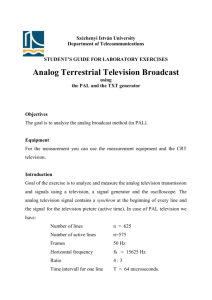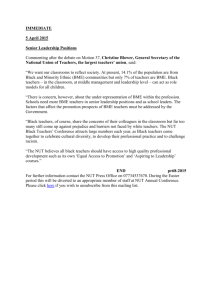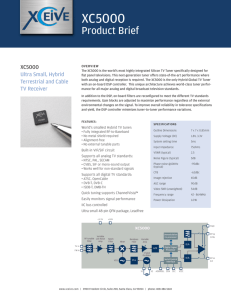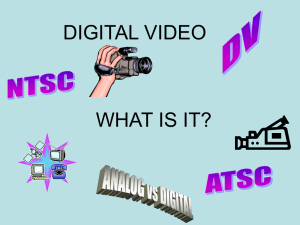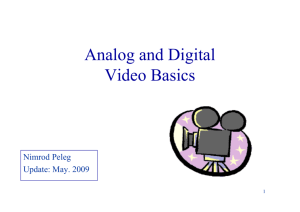Infocommunication Video broadcasting
advertisement
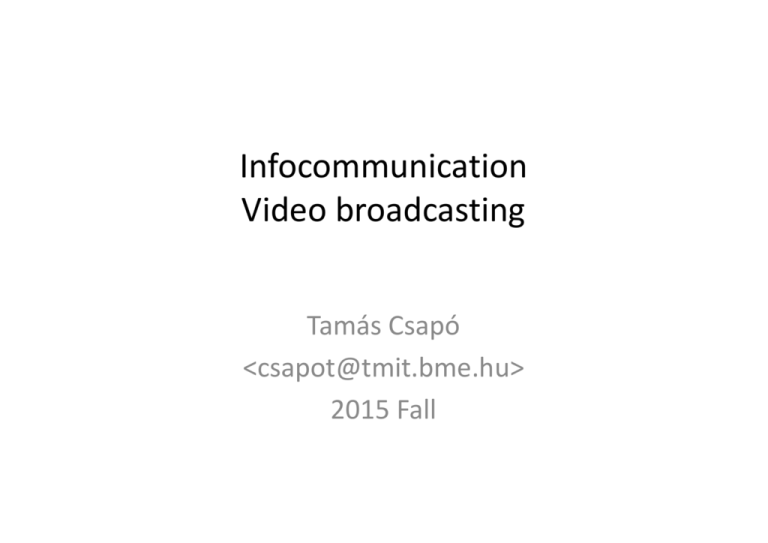
Infocommunication
Video broadcasting
Tamás Csapó
<csapot@tmit.bme.hu>
2015 Fall
Video broadcasting
2
Limits of human eye
3
Cinema vs. Television
4
Line interlacing
Source: PP
5
Example for interlacing
Source: http://www.paradiso-design.net/videostandards_en.html
6
Cinema vs. Television
7
Number of lines on TV
3 x 3 x 3 x 3 x 5 = 405 (United Kingdom)
3x5x5x7
= 525 USA, Japan, …
5x5x5x5
= 625 EU, Australia, Africa,
Asia, …
3 x 3 x 7 x 13 = 819 (France)
Source: http://alpha.tmit.bme.hu/vitma301/gyak09_foliak.pdf
8
Signal conversion
9
Color difference signals
Y = 0.3·R + 0.59·G + 0.11·B
Source: http://alpha.tmit.bme.hu/vitma301/gyak09_foliak.pdf
10
YUV
11
PAL, NTSC, SECAM
color difference signals
• PAL:
– Y + QAM{u,±v}
• NTSC:
– Y + QAM{I,Q}
• SECAM:
– Y + FM1{u} \ FM2{v}
Source: http://alpha.tmit.bme.hu/vitma301/gyak09_foliak.pdf
Source: http://cnyack.homestead.com/files/modulation/ntsc_sig.htm
12
Baseband time function of analog TV
13
white (Y = 1)
black (Y = 0)
H-sync
Source: http://alpha.tmit.bme.hu/vitma301/gyak08.pdf
14
Spectrum of analog TV signal
15
Time function of color signal
16
Oscillogram of composite PAL signal—
two lines
Source: http://en.wikipedia.org/wiki/PAL
17
Transmission of audio
18
Modulation
19
Analog TV systems by nation
Source: http://en.wikipedia.org/wiki/PAL
20
Satellite transmission (analog)
•
•
•
•
Completely different compared to air/cable
Geostationary, 36 000 km above ground
Very small SNR
FM modulation
– (instead of AM-VSB, in order to protect signal)
– 6 MHz frequency deviation
•
•
•
•
8-10 audio channels for the same video
Baseband bandwith: 7.25 MHz
Carson-rule: B = 2 x (7.25 + 6) => 27 MHz raster
Vertical / horizontal polarization
21
DIGITAL TV
22
Digital TV, DVB
23
Source coding
24
Modulation
25
DVB-C (Cable / Community)
• cable provider
– change some analog channels to digital
– use same 8 MHz raster
• 8 MHz, QAM-64 (6 bit/symbol)
• elementary function: 15% raised cosine
• 6 Mbaud signal, 38 Mbps multiplex channel
– HD: ~6-8 Mbps required
– SD: ~2 Mbps required
– several HD and SD channels on the 8 MHz raster
26
DVB-S (Satellite)
• worse SNR than DVB-C
• QPSK modulation
• same 38 Mbps multiplex channel as in DVB-C
– requires 37 MHz
– (no problem, in GHz region)
• for sparsely populated areas
27
DVB-H (Handheld)
•
•
•
•
•
Mobile TV
access to service while in moving vehicle
display size: larger postal stamp
tuner consumes much power
not widespread (lack of business model)
28
DVB-T (Terrestrial)
• problems:
– multipath propagation, dispersion
– ISI (vs. analog: ghost image)
• Forward error correction
• Cyclic error correction
– Reed-Solomon code, RS(204, 188)
• OFDM with ~6000 subcarriers
– QAM-16
• different from country to country
– Hungary: MPEG-4, H.264 source coding
29
Digital TV systems by nation
ATSC = Advanced Television Systems Committe
ISDB = Integrated Services Digital Broadcasting
DTMB = Digital Terrestrial Multimedia Broadcast
Source: http://en.wikipedia.org/wiki/Digital_terrestrial_television
30
DVB-T coverage in Hungary
(since 2014 August)
Source: http://mindigtv.hu/lefedettseg
31





